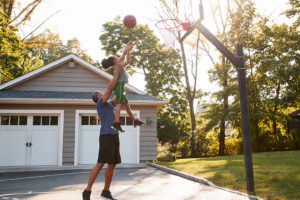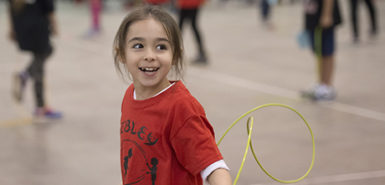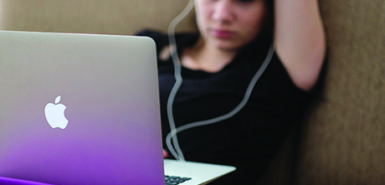
While back-to-school time usually brings with it recess, gym and extracurricular sports, this year is different.
During the pandemic, children are learning from home, at school or a mix of both. And many extracurricular activities are canceled or look different these days.
So what does that mean for kids’ physical fitness?
“Virtual school could mean more sitting time,” said Lucie Silver, an exercise physiologist at Spectrum Health Helen DeVos Children’s Hospital Healthy Weight Center. “This makes it even more important to have kids move after school and on weekends.”
Silver said children should be up and moving for at least an hour each day. Children ages 3-5 require even more activity.
It doesn’t need to be an hour all at once—it can be broken up into multiple segments each day—but it needs to happen daily.
And, just as importantly, the activities they engage in need to be worthwhile—demanding enough to get their heart pumping hard, and long enough that they’re breathing heavily. This isn’t just about kids. Caregivers and families will all reap the benefits of activity.
Life happens
While some kids play and run hard, some are more comfortable doing less intense activities. Some will have access to outdoor group play and sports activities, and some won’t.
This means parents should encourage their kids to get moving at home, and they should lay the groundwork for future fitness and good health.
“Life happens, and it’s not going to be perfect every day, but it’s important to help kids move more in general,” Silver said. “And it’s important as parents to set a good example for kids. Make being active part of the routine and emphasize the fun.”
Remember, everyone needs exercise, regardless of age or size.
For intensity, Silver recommends using what’s called the “talk test” to be sure we’re engaging in aerobic activities.
“You should be able to have a conversation,” she said, “but it’s going to be a little bit harder to talk between breaths.”
On the intensity scale, where 0 is not tired at all and 10 is extremely tired, aim for about a 5 out of 10 for at least one hour each day, Silver said.
She suggests these ideas to get kids started, based on their ages:
- Toddlers and preschoolers: By nature, toddlers move a lot in a “stop and go” pattern, and their little bits of activity are going to add up throughout the day, Silver said. But she also encourages parents to create active supervised activities for little ones. For instance, spread toys, socks or laundry around the room and then work together to pick them up one at a time, placing them in a basket or box. You can run, jump, skip, hop or crawl as you play. Or, take your little one for a walk and bring along a ball they can chase during the walk. A scavenger hunt at a park or in the yard can also get them moving.
- Elementary age: Sports such as soccer and basketball are great to get their hearts pumping, Silver said. Bike riding also works, but this should entail more than just casually pedaling around the neighborhood. Older kids love obstacle courses, inside or outside. Using everyday items, you can build an obstacle course in your house or yard, giving children a great reason to jump, crawl and run. Make it a race among family members.
- Teens: For structured strength training, create a circuit with jumping jacks, squats, push-ups and other body weight movements. These can be done during commercial breaks on television. Take turns choosing exercises and challenge each other, Silver said.
Silver encourages parents to practice what they preach.
“Kids inherently want to move and play,” she said. “The problem is that screens are sometimes seen as cooler than playing. So, given a choice, kids are going to choose screens. We have to have things for them to do to draw them away. So instead of just reducing screen time, say, ‘We’re all going to go outside and shoot hoops.’”
“The best way to teach kids to be active is to model it yourself,” she said. “Instead of saying, ‘Go play,’ say, ‘Let’s go play.’”

 /a>
/a>
 /a>
/a>
 /a>
/a>